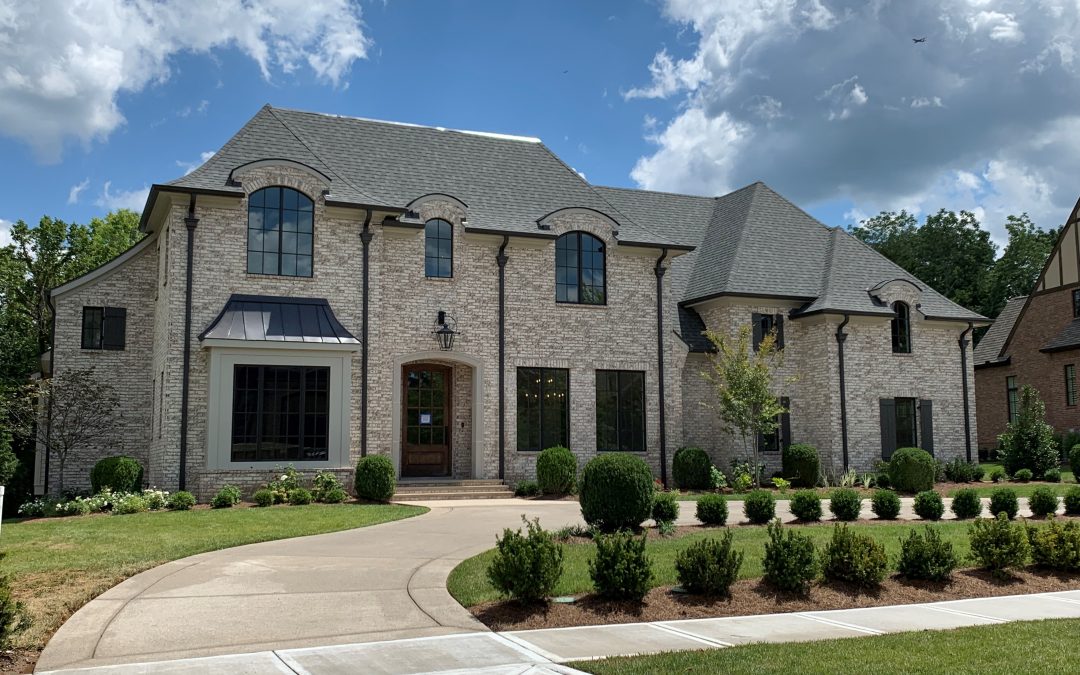When you’re building a new home or business, choosing the right material is more critical than ever. With extreme weather on the rise, you need a material that offers serious performance and protection. That’s why few materials can match brick. A brick building is a powerful fortress, standing strong against high-impact hail, the powerful winds of storms and tornados, and the costly damage caused by flooding.
Brick As The Ultimate Fire Defense
Brick’s role in protecting your structure doesn’t end with wind and water. While keeping out the elements is vital, a building’s most critical function is safeguarding its occupants and assets from immediate danger. This is where brick truly delivers. It provides a fundamental layer of safety and security through its unmatched capability for fire prevention and resistance—the ultimate defense for your property and the lives within it.
Brick Material is the Best Fire Barrier
When fire strikes, materials like wood framing accelerate the spread, and even many types of siding can melt or ignite instantly. To truly protect your investment, you need a material that is already fireproof at its core. Here are our Top 5 Reasons Why Brick is the Best Fire Barrier.

Brick Is Naturally Fireproof (Non-Combustible) – Unlike wood, vinyl, or fiber cement, clay brick is classified as non-combustible. It’s not treated to resist fire; it is fundamentally fireproof because it is manufactured in massive kilns under temperatures hotter than any typical house fire. Because brick has already survived this extreme heat test, it will not ignite, melt, or contribute any fuel to a fire, drastically slowing the blaze’s ability to spread.eat brick supplier doesn’t just sell brick; they have a team that truly knows their product. Their sales team shou
“On average, brick provides 1.5 hours of protection before a fire breaches your home, whereas vinyl and fiber-cement siding won’t withstand 30 minutes.”
Brick Provides Critical Time for Safety and Evacuation – Brick walls are a powerful thermal barrier, drastically slowing how quickly fire can breach the home’s structure. While lightweight materials may fail in minutes, brick construction is proven to offer up to an hour and a half of fire resistance. It gives people a generous window to escape safely and provides firefighters the extra time they need to control the blaze and save people and property.
Brick Maintains Strength and Structural Integrity – Fire is devastating because it quickly compromises a building’s frame, often leading to total collapse. Brick masonry is proven to retain its strength even when exposed to prolonged, intense heat. This means your walls stay standing, which is critical for two reasons: it ensures the structure remains safe for occupants and first responders, and it dramatically reduces the chances of catastrophic collapse, allowing for much easier and less costly repairs after the fire is out.
Brick Doesn’t Release Toxic Fumes – When synthetic materials like vinyl siding or certain plastics burn, they often release thick, toxic smoke and chemical gases (including carcinogens) that are actually more dangerous than the flames themselves. As a natural, inert material, brick does not combust. By choosing brick, your exterior walls will not release harmful chemical compounds into the environment or, critically, into your home, helping people breathe cleaner air for crucial minutes.
Brick Earns the Highest Fire Resistance Ratings (FRLs)—Building safety is measured by Fire Resistance Levels (FRLs), which show how long a wall can withstand a fire without failing. Brick construction consistently earns the highest ratings available, often providing up to four hours of protection, depending on the wall’s design. This superior rating means brick not only meets the strictest fire safety codes but also provides your property with the ultimate, certified barrier against disaster.
|
Material / Assembly Type |
Typical Fire-Resistance Rating* |
Notes / Resource |
|
Clay brick masonry (solid) |
2 – 4 hours |
Per the Brick Industry Association TN 16 “Fire Resistance of Brick Masonry” document: a wall assembly may attain up to 4 hours when properly constructed. Brick Industry Association |
|
Clay or shale brick (minimum equivalent thickness) |
1 h: ~2.7 in (69 mm) 2 h: ~3.8 in (97 mm) 3 h: ~4.9 in (124 mm) 4 h: ~6.0 in (152 mm) |
From NCMA TEK table for “Brick or Tile of Clay or Shale” in concrete masonry context. Lee Building Products |
|
Concrete masonry units (CMU) / concrete masonry wall assemblies |
1 – 4 hours (depending on thickness, grouting, aggregate type) |
“Fire Resistance Rating Period of Concrete Masonry Assemblies” shows equivalent thickness vs rating. Lee Building Products |
Brick: The Ultimate Investment in Peace of Mind
Some will choose brick for its timeless beauty, low maintenance, and energy efficiency, but the greatest benefit it actually offers is one you can’t put a price tag on: peace of mind. Knowing your home or business is surrounded by a material that withstands severe storms, repels moisture, and, most importantly, provides a robust, non-combustible shield against fire offers unparalleled security. For the safety of your family or the longevity of your business, choosing brick is the clearest choice for a truly resilient investment.
Contact the North Georgia Brick Experts
The team at North Georgia Brick is available to help secure your investment and your peace of mind. Contact our brick experts to walk you through your new residential or commercial project. Visit any one of our conveniently located showrooms in Cartersville, Cumming, Lovejoy, Newnan, and Doraville today!
FAQ
Is brick the most fire-resistant building material?
Brick provides excellent fire resistance. It is often far better than many siding or framing materials. Other materials, like heavy concrete elements or specialized fire-resistant systems may perform equal or even superior in certain conditions.
How long can brick withstand fire?
Brick masonry can achieve very high fire resistance up to 2, 3, or even 4 hours. The material thickness, how it’s constructed (solid vs hollow, grouted vs ungrouted), and the specific wall assembly (finishes, penetrations, support) matter. The “hours of protection” aren’t a fixed number, they vary depending on the design.
What is a fire-resistance rating (FRL) and why does it matter?
An FRL rating, or Fire Resistance Level, is a measure of a building material’s ability to withstand fire, expressed in minutes for three criteria: structural adequacy, integrity, and insulation. For example, an FRL of 60/120/90 means the material can maintain structural stability for 60 minutes, prevent the passage of flames and hot gases for 120 minutes, and limit heat transfer on the unexposed side for 90 minutes. Source: Fire Safe Board

